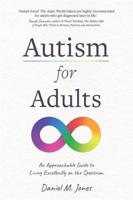Publisher's Synopsis
For Toddlers from 3 years of age
It is very important to understand that children from this age are starting to notice differences by becoming aware of many things and have many questions to ask. The questions might be shocking, but you need to avoid overreacting so they feel comfortable asking more questions in the future.
Why am I white?
Which shade of skin colour is better?
How should you answer some of these questions?In the light of recent events, many parents or adults may find themselves struggling to talk about the concepts of race, ethnicity, racism and social justice with kids. What is discussed depends on a family's makeup and the community in which they live, but it is important for everyone, independently of ethnicity and belonging to start having 'the conversation' and start learning some tricks and ideas on how to behave when confronted with racist situation and/or people.
Why do we need to talk about racism and social justice to kids?
How to start a conversation about racism with kids?
How does racism affect health and well-being in children?
You can start to educate yourself about the root of prejudice, identity formation, race and racism with this book. This will allow you not to feel uncomfortable or feel you lack knowledge and understanding about the topic when you face children's concerns and questions about diversity.
This book covers the following topics:
✓ Making sense of the world
✓ Who am I?
✓ What is anti-racism?
✓ What is social justice?
✓ Kids reaction to diversity
✓ Help children about their curiosity and questions
✓ How to raise anti-racism and social justice children
...And much more
Adults' discomfort with the topic can be a barrier to these conversations on discussing race with children.
"All parents need to help their children think and talk about our country's racial inequality as a step toward creating a more equal society".
By reading this book, you will gain a better understanding of the topic and be able to talk to your children about racism, social justice, and the struggles for human and civil rights for all people. You will know much more about your child developmental stages and act on them accordingly. Furthermore, you and your children will be able to put into practices some tips and tricks to deal with embarrassing and confrontational situations that can happen in everyday life.
Explanation of these concepts directly may be complex and difficult, but the introduction of these concepts in the educational process and finding appropriate methods for the child's age to communicate these ideas is what is valuable. Protecting children from being exposed to racism by constantly opening their lines of communication with them about what they might be exposed to in their different places of activity, making sure to communicate with other children's families to support and promote the rejection of racism, and contacting the school to consult about what children are exposed to.
It is also essential for children to understand the long march of the struggle against racism to make the world a better place for future generations.
Want to know more about this book? Then BUY it now!









